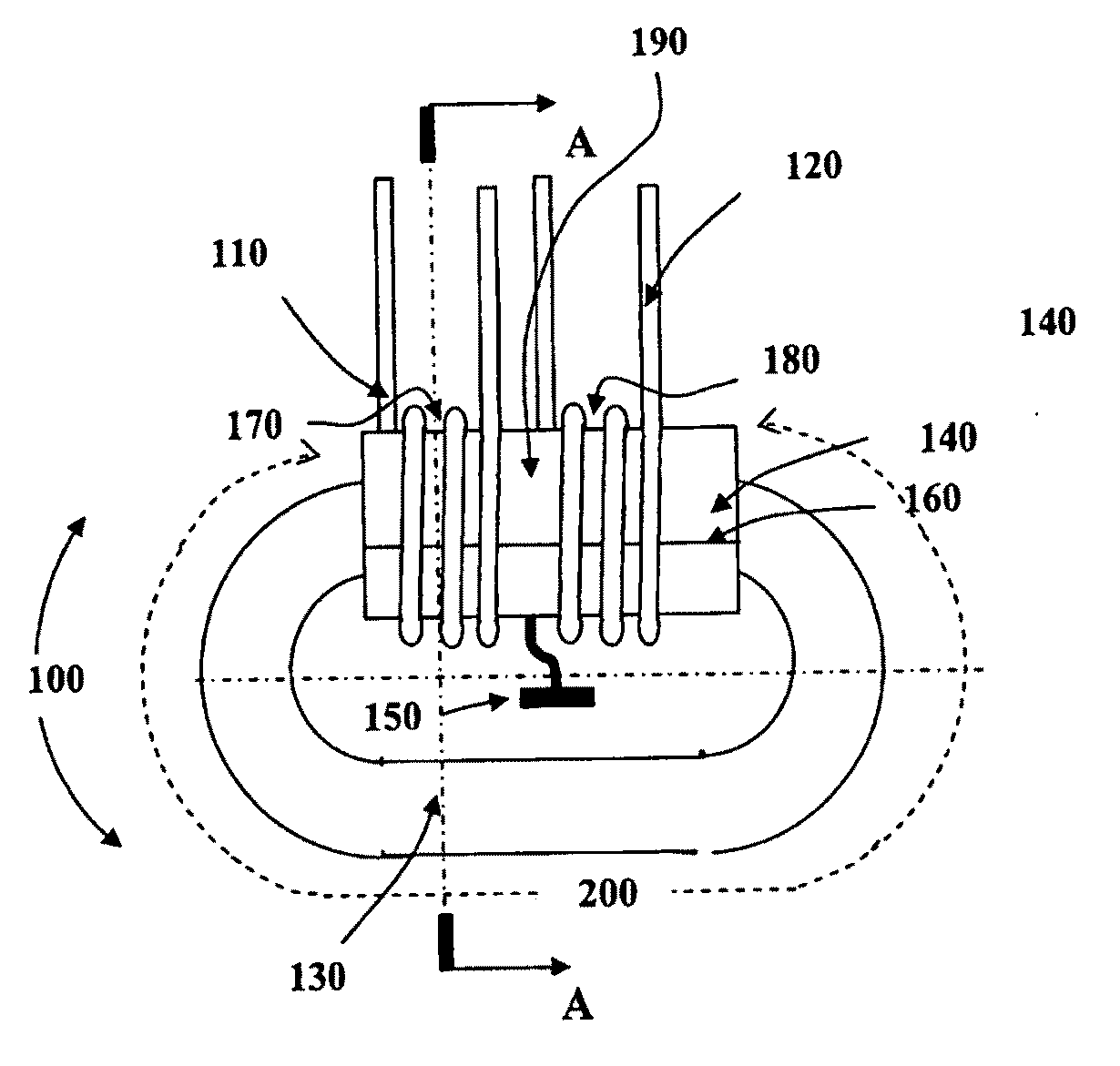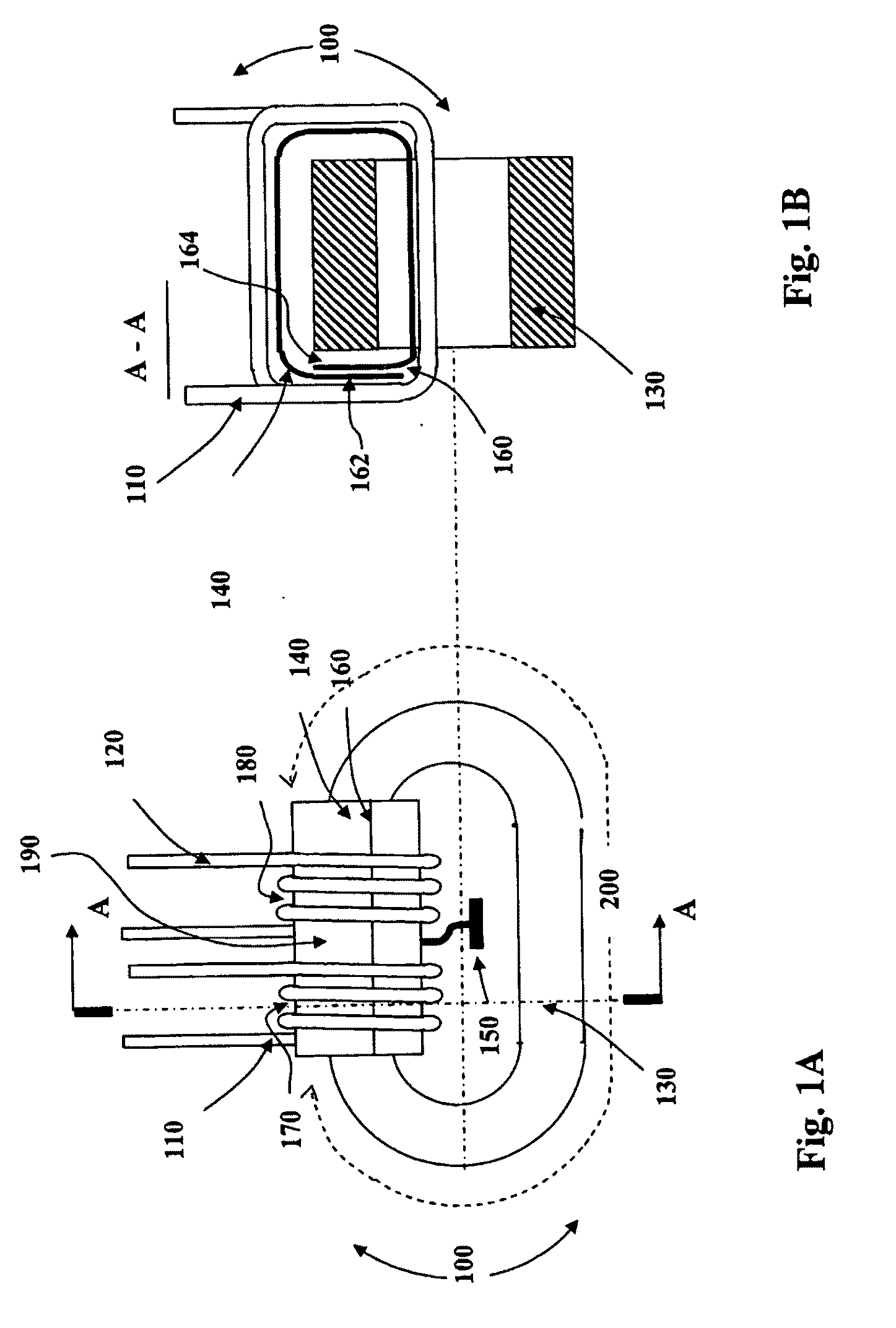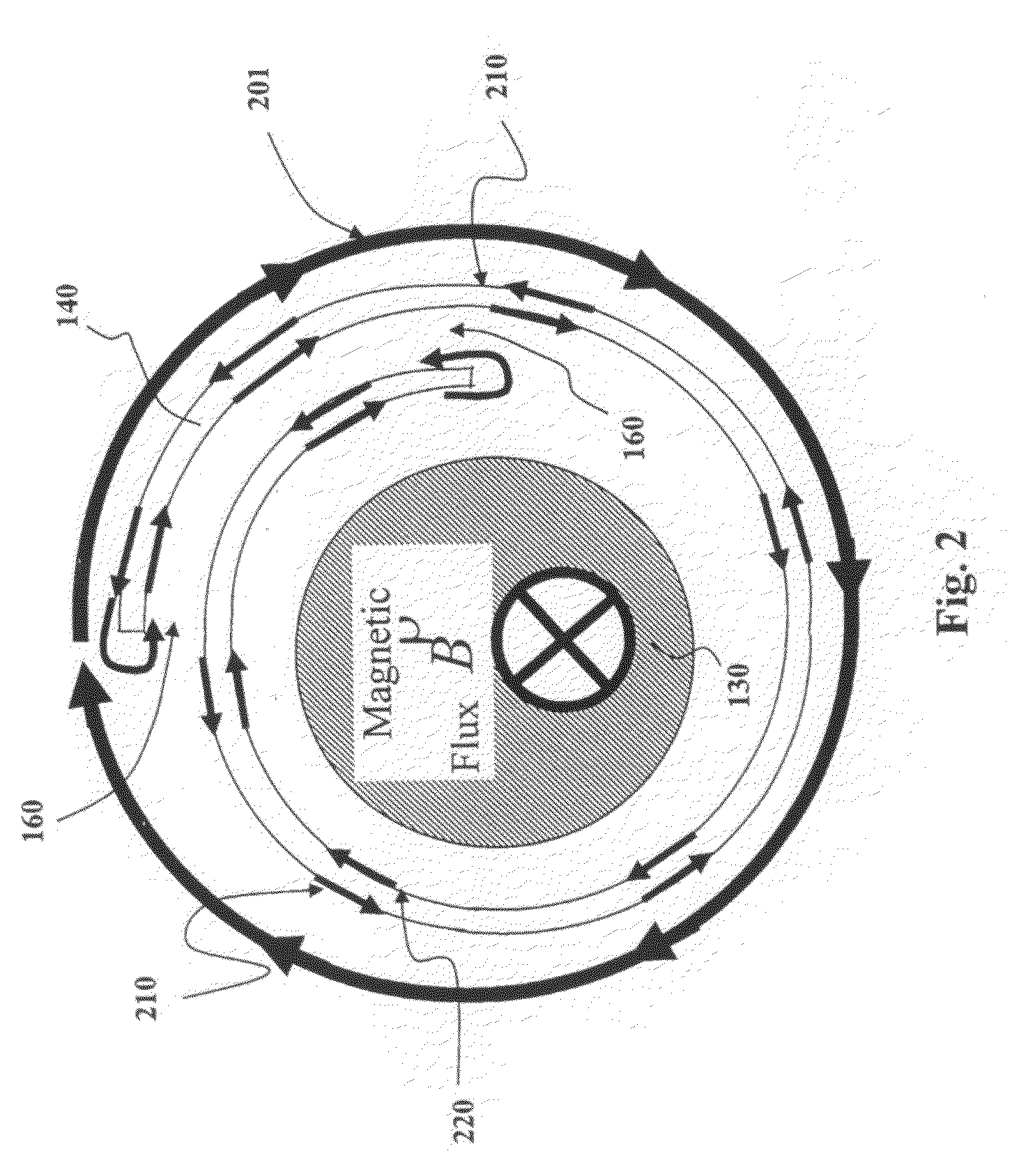Magnetic Induction Device
a magnetic induction device and inductance technology, applied in the direction of transformer/react mounting/support/suspension, instruments, etc., can solve the problems of imbalance, ineffectiveness of conventional transformers, complex magnetic devices and designs, etc., to reduce leakage inductance, reduce metallic losses, and enhance common-mode (cm) signal rejection
- Summary
- Abstract
- Description
- Claims
- Application Information
AI Technical Summary
Benefits of technology
Problems solved by technology
Method used
Image
Examples
Embodiment Construction
[0064]Reference is now made to FIG. 1A, which is a simplified pictorial illustration of a preferred implementation of a magnetic induction device (MID) 100 comprising a transformer which employs a grounded Electrically-Conductive Cover (ECC), the MID 100 being constructed and operative in accordance with a preferred embodiment of the present invention.
[0065]The MID 100 may, for example which is not meant to be limiting, be used as a transformer in various applications including, for example, communication applications. The MID 100 preferably includes the following elements: at least one primary electrical winding 110; at least one secondary electrical winding 120; a core 130 via which the at least one primary electrical winding 110 and the at least one secondary electrical winding 120 are magnetically coupled; and an ECC 140. For simplicity of description and depiction, only one primary electrical winding 110 and one secondary electrical winding 120 are shown in FIG. 1A and referred...
PUM
| Property | Measurement | Unit |
|---|---|---|
| frequencies | aaaaa | aaaaa |
| frequencies | aaaaa | aaaaa |
| frequencies | aaaaa | aaaaa |
Abstract
Description
Claims
Application Information
 Login to View More
Login to View More - R&D
- Intellectual Property
- Life Sciences
- Materials
- Tech Scout
- Unparalleled Data Quality
- Higher Quality Content
- 60% Fewer Hallucinations
Browse by: Latest US Patents, China's latest patents, Technical Efficacy Thesaurus, Application Domain, Technology Topic, Popular Technical Reports.
© 2025 PatSnap. All rights reserved.Legal|Privacy policy|Modern Slavery Act Transparency Statement|Sitemap|About US| Contact US: help@patsnap.com



